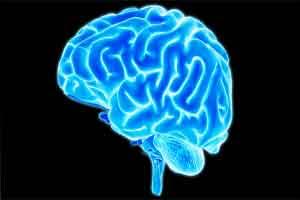- Home
- Editorial
- News
- Practice Guidelines
- Anesthesiology Guidelines
- Cancer Guidelines
- Cardiac Sciences Guidelines
- Critical Care Guidelines
- Dentistry Guidelines
- Dermatology Guidelines
- Diabetes and Endo Guidelines
- Diagnostics Guidelines
- ENT Guidelines
- Featured Practice Guidelines
- Gastroenterology Guidelines
- Geriatrics Guidelines
- Medicine Guidelines
- Nephrology Guidelines
- Neurosciences Guidelines
- Obs and Gynae Guidelines
- Ophthalmology Guidelines
- Orthopaedics Guidelines
- Paediatrics Guidelines
- Psychiatry Guidelines
- Pulmonology Guidelines
- Radiology Guidelines
- Surgery Guidelines
- Urology Guidelines
Mad cow disease in Human

Abnormal proteins involved in the brain-destroying Creutzfeldt-Jakob disease (CJD) - a human form of "mad cow" disease - are detectable in the skin, raising new concerns about the virus' transmission, researchers said.
According to the report in the journal Science Translational Medicine, while it is highly unlikely that the fast-moving and fatal disease could be spread by casual contact, since the prions in the skin are at levels 1,000-100,000 times lower than in the brain, the discovery means CJD could be spread through common surgeries that do not involve the brain.
"It is well known that CJD is transmissible via surgical or medical procedures involving prion-infected brain tissue," said lead author Wen-Quan Zou, associate professor of pathology and neurology at Case Western Reserve School of Medicine.
"Our finding of infectious prions in skin is important since it not only raises concerns about the potential for disease transmission via common surgeries not involving the brain, but also suggests that skin biopsies and autopsies may enhance pre-mortem and post-mortem CJD diagnosis," he added.
Only biopsies, spinal taps or autopsies can tell for sure if a patient is stricken with the rare, degenerative brain disorder which affects one in a million people per year worldwide.
Patients develop tiny sponge-like holes in their brains and experience sudden memory and vision problems, behavioral changes, and poor coordination.There is no cure for CJD and most people who are diagnosed rapidly deteriorate, and die within a year.The study was based on skin samples from 38 patients, who died from the disease.
Prion levels were measured using a new, highly sensitive test.Research using lab mice showed that these skin prions are indeed infectious, and capable of causing disease.But more research is needed to better understand the risks.
"The level of prion infectivity detected in CJD skin was surprisingly significant, but still much lower than that in CJD brains," said co-author Qingzhong Kong, associate professor of pathology and neurology at Case Western Reserve School of Medicine.
"Prion transmission risk from surgical instruments contaminated by skin prions should be much lower than that of instruments contaminated by brain tissue," he also said.The findings may also assist in diagnosing the condition less invasively, whether before or after death.
"Using the skin instead of brain tissue for post-mortem diagnosis could be particularly helpful in cultures that discourage brain autopsy, such as China and India," Zou said.
"These countries have the largest populations with the greatest number of patients, but brain autopsy is often not performed," he added.
The disease leapt into public awareness decades ago when people in Britain were diagnosed with a type of CJD after eating meat from diseased cattle.The European Union ordered a worldwide embargo on British beef and its derivatives in 1996, then lifted it three years later.The World Health Organisation said there have been 224 cases of Creutzfeldt-Jakob disease from October 1996 to March 2011, mainly in Britain.

Disclaimer: This site is primarily intended for healthcare professionals. Any content/information on this website does not replace the advice of medical and/or health professionals and should not be construed as medical/diagnostic advice/endorsement or prescription. Use of this site is subject to our terms of use, privacy policy, advertisement policy. © 2020 Minerva Medical Treatment Pvt Ltd